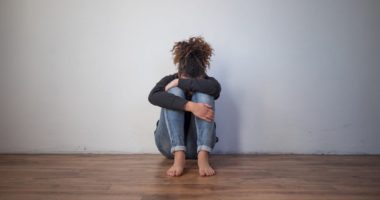Love Isn’t All We Need In America Right Now
In the online comment section under news articles on recent shootings of and by police are missives from pained, well-intentioned Americans, crying various themes of “love is ALL we need” to end racism and bridge the gap of a deeply divided America.
And while these pleas to simply love more are a welcome escape from the countless vile comments describing Black and Brown people, I worry these sentiments don’t go nearly far enough to strike needed chords of action. Simply put, this “Love is ALL we need” mantra allows too many well-meaning people to cling to the comforting notion that we can somehow simply love racism away in America, healing its wounds with a hug.
As a Black woman and an advocate who has spent years staring down deeply entrenched inequities in our nation’s schools, I have to say this: While love is mighty, it’s going to take more than just love, sermons delivered via Facebook posts, and kumbaya Instagram memes to destroy the ills and injustices of racism that plague us still today.
Love alone can’t stop a bullet. Love alone can’t draw discriminatory policies into the light and interrogate them. Love alone can’t even seem to bring charges against officers who cruelly and unnecessarily deprive Black citizens of life and their families and communities of their gifts.
The truth is that while the headlines and horrific videos of late have brought injustice into stark clarity, Black and Brown lives are not only threatened, undervalued, and feared by institutions that are charged to protect and serve; they are threatened, undervalued, and feared across all of our public institutions, including in the very places those lives are supposed to be nurtured and grown: their schools.
Consider these data from the U.S. Department of Education’s Office for Civil Rights:
- Black preschool children are 3.6 times as likely to receive one or more out-of-school suspensions as white preschool children.
- Black students are 3.8 times as likely to be suspended or expelled as white students.
- Black students are 2.3 times as likely to receive a referral to law enforcement or be subject to a school-related arrest as white students.
These facts should universally horrify us. But, instead of shock, the response that follows — fed on widely-held beliefs and popular culture — is some version of, “Well, Black and Brown children act out more, don’t they?” As a matter of fact (and a considerable amount of data), NO. These differences exist because young, Black and Brown students in our schools are often unfairly singled out and given harsher penalties than are White students for the same or lesser offenses.
And it is not just in matters related to discipline that Black and Brown students are treated as second-class citizens in our public schools. By just about every other measure, students of color get less of everything that matters for the development of young people — and more of everything that holds them back.
Again, let’s look at the data:
- Students of color are far less likely to be enrolled in gifted and talented programs, even when they have demonstrated the aptitude to succeed there.
- Nationally, districts serving the most students of color receive about $2,000, or 15 percent, less per student than districts serving the fewest students of color — which, for a 1,000-student high school, means a whopping $2 million per year in missing resources.
- Students of color are more likely than are their White peers to be taught by inexperienced and out-of-field teachers.
There are plenty of educators and decision-makers who “love” the students they serve but who are blind to the ways in which the decisions they make — whether in the classroom or statehouse or U.S. Congress — consistently deal out injustices to Black and Brown students. Indeed, Jim Crow may have died, but his harsh legacy of implicit bias and racism still reverberates through our schools.
Let me be clear: Love is powerful and is desperately needed. But it alone can’t change the systemic injustices and racial inequalities that plague our country’s public institutions. Love must be coupled with concrete steps to affect change in policies, practices, and beliefs that shift the appropriate power structures needed to truly realize justice.
Perhaps, Dr. Martin Luther King Jr. summed it up best when he said, “What is needed is a realization that power without love is reckless and abusive, and love without power is sentimental and anemic. Power at its best is love implementing the demands of justice, and justice at its best is power correcting everything that stands against love.”
Photo credit: Wikimedia









